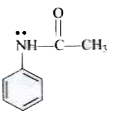Which of the following elements has the strongest tendency to form electrovalent compound ?
Li
Na
Be
Mg
The correct Answer is:B
To determine which of the following elements has the strongest tendency to form an electrovalent (ionic) compound, we need to analyze the options provided: Lithium (Li), Sodium (Na), Beryllium (Be), and Magnesium (Mg).
Step 1: Understanding Electrovalent Compounds
Electrovalent compounds are formed when there is a transfer of electrons from one atom to another, resulting in the formation of cations and anions. The tendency to form such compounds is influenced by the charge on the cation and the size of the cation.
Hint: Remember that cations are positively charged ions formed by losing electrons.
Step 2: Identifying the Cations
We can convert the elements into their respective cations:
- Lithium (Li) → Li⁺ (charge +1)
- Sodium (Na) → Na⁺ (charge +1)
- Beryllium (Be) → Be²⁺ (charge +2)
- Magnesium (Mg) → Mg²⁺ (charge +2)
Hint: Look at the charges of the cations; higher positive charge usually indicates a stronger tendency to form ionic bonds.
Step 3: Analyzing Ionic Character
According to Fajans’ rules, the ionic character of a compound is directly proportional to the size of the cation and inversely proportional to the charge on the cation. This means:
- Cations with a lower charge and larger size will have a greater tendency to form ionic compounds.
Hint: Larger cations with lower charges are more likely to exhibit ionic character.
Step 4: Comparing Sizes of Cations
- Lithium ion (Li⁺) and Sodium ion (Na⁺) belong to Group 1 (alkali metals).
- Beryllium ion (Be²⁺) and Magnesium ion (Mg²⁺) belong to Group 2 (alkaline earth metals).
In general, as we move down a group, the size of the cation increases due to the addition of electron shells. Therefore:
- Na⁺ is larger than Li⁺.
- Mg²⁺ is smaller than Be²⁺.
Hint: Remember that atomic size increases down a group and decreases across a period.
Step 5: Conclusion
Since Na⁺ has a +1 charge and is larger than Li⁺, it will have a stronger tendency to form electrovalent compounds compared to Li⁺. On the other hand, Be²⁺ and Mg²⁺ have a +2 charge, which makes them less favorable for forming ionic compounds compared to Na⁺.
Thus, the element with the strongest tendency to form an electrovalent compound among the given options is Sodium (Na).
Final Answer: Sodium (Na)
Electrovalent compounds are formed when there is a transfer of electrons from one atom to another, resulting in the formation of cations and anions. The tendency to form such compounds is influenced by the charge on the cation and the size of the cation.
We can convert the elements into their respective cations:
- Lithium (Li) → Li⁺ (charge +1)
- Sodium (Na) → Na⁺ (charge +1)
- Beryllium (Be) → Be²⁺ (charge +2)
- Magnesium (Mg) → Mg²⁺ (charge +2)
According to Fajans’ rules, the ionic character of a compound is directly proportional to the size of the cation and inversely proportional to the charge on the cation. This means:
- Cations with a lower charge and larger size will have a greater tendency to form ionic compounds.
- Lithium ion (Li⁺) and Sodium ion (Na⁺) belong to Group 1 (alkali metals).
- Beryllium ion (Be²⁺) and Magnesium ion (Mg²⁺) belong to Group 2 (alkaline earth metals).
- Na⁺ is larger than Li⁺.
- Mg²⁺ is smaller than Be²⁺.
Since Na⁺ has a +1 charge and is larger than Li⁺, it will have a stronger tendency to form electrovalent compounds compared to Li⁺. On the other hand, Be²⁺ and Mg²⁺ have a +2 charge, which makes them less favorable for forming ionic compounds compared to Na⁺.
Topper's Solved these Questions
- CHEMICAL BONDING AND MOLECULAR STRUCTURE BOOK - AAKASH INSTITUTE ENGLISHCHAPTER - CHEMICAL BONDING AND MOLECULAR STRUCTURE EXERCISE - Assignment Section - B Objective Type Questions(One option is correct)
37 Videos
- CHEMICAL BONDING AND MOLECULAR STRUCTURE BOOK - AAKASH INSTITUTE ENGLISHCHAPTER - CHEMICAL BONDING AND MOLECULAR STRUCTURE EXERCISE - Assignment Section - C Objective Type Questions(More than one options are correct )
13 Videos
- CHEMICAL BONDING AND MOLECULAR STRUCTURE BOOK - AAKASH INSTITUTE ENGLISHCHAPTER - CHEMICAL BONDING AND MOLECULAR STRUCTURE EXERCISE - Try Yourself
20 Videos
- BIOMOLECULESBOOK - AAKASH INSTITUTE ENGLISHCHAPTER - BIOMOLECULESEXERCISE - EXERCISE (ASSIGNMENT) SECTION - D Assertion - Reason Type Questions
5 Videos
- CHEMICAL KINETICSBOOK - AAKASH INSTITUTE ENGLISHCHAPTER - CHEMICAL KINETICSEXERCISE - ASSIGNMENT (SECTION D : Assertion - Reason Type Questions)
15 Videos
Similar Questions
Knowledge Check
Which of the following compounds is strongest base?
A B
B C
C D
D
Which of the following sets has the strongest tendency to form anions ?
V, Cr, Mn
Ga, In, Tl
Na, Mg, Al
N, O, F.AV, Cr, MnBGa, In, TlCNa, Mg, AlDN, O, F.
Elements of which of the following sets has the strongest tendency to form anions?
View SolutionWhich one of the following has the strongest O - O bond?
View SolutionWhich of the following lanthanoids has highest tendency to form complexes ?
View SolutionWhich of the following compounds has the least tendency to from H-bonds ? .
View SolutionWhich of the following has the least tendency to dimerise ?
View SolutionWhich of the following cations has the storngest tendency towards complex formation?
View Solution
